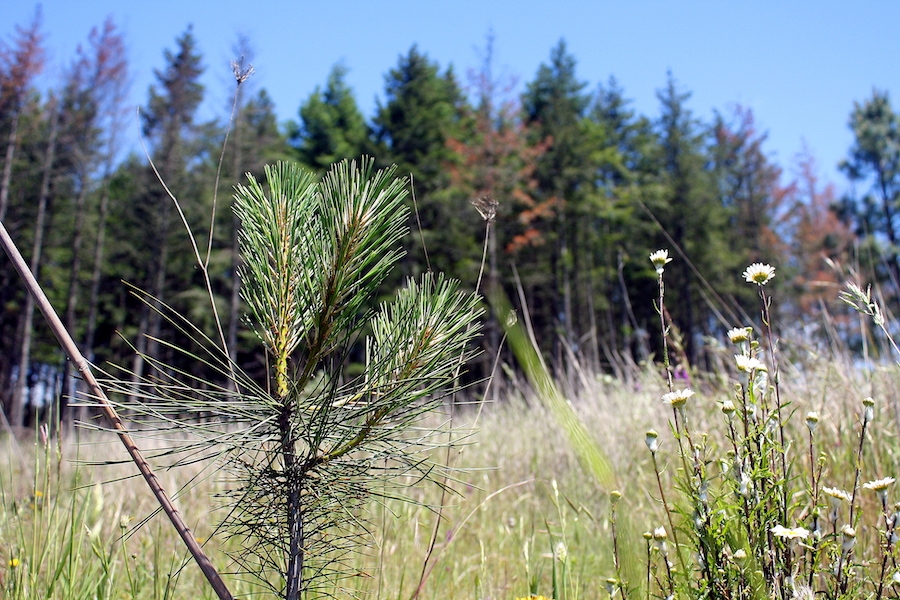A forest manager calls for landowners to plant more climate-resilient trees.
Branches turning red — that is the telltale sign of the Douglas fir tree’s demise. All along the I-5 corridor, from Portland to Eugene, forests planted with this iconic tree are showing signs of distress. Once the needles of the fir tree turn red, it dies within one to two years.
Ben Deumling, owner of Zena Forest Products, is keenly aware of the challenges facing Douglas fir. He owns 1,300 acres of forestland in the Zena Forest near Salem. Over the past 10 years, 10% of Douglas fir trees on his land have died.
The forest owner is so concerned about the tree’s decline that he is calling for landowners to diversify the types of trees grown on their properties, particularly in the Willamette Valley, where the problem is most acute.
Hotter, drier summers are to blame for the demise of the Douglas fir. The tree thrives in cool, moist climates. Oregon’s summer temperatures are rising and the climate is drier, putting stress on the tree and making it vulnerable to insect infestations and pathogens.
Clumps of trees with red branches are showing up all over the Willamette Valley, says Deumling. “Every landowner is seeing the exact same thing. From Eugene up to Portland, it is everywhere,” he says.
For the past 20 years, Deumling has experimented with planting different types of trees that are more suited to the drier, hotter weather in the Willamette Valley. Different species he has planted include Oregon white oak, ponderosa pine and incense cedar. These trees are now thriving compared with Douglas fir, he says.
At one time, the Willamette Valley was covered in white oak. Landowners wiped it out in favor of planting the more valuable and quick-growing Douglas fir. Only 5% of the white oak tree ecosystem is left in the Willamette Valley.
Deumling says local demand for oak is growing as consumers search for more sustainable, locally grown wood products. As a hardwood, oak is particularly suited for flooring and cabinets.
He is also experimenting with planting trees native to California, such as the giant sequoia. He adds the trees do not grow as tall inland as California’s giant redwoods do closer to the Pacific coastline.
Deumling hopes other forest owners diversify their forests to make them more resilient to climate change. “The more homogenous the ecosystem, the more precarious it is,” he says. “We need rapid diversification to save forests.”
Others are more reserved about the benefits of diversification. Some species of tree, such as California’s coastal redwoods, do not do well in cold snaps that occur in Oregon, says Rick Zenn, senior fellow at the World Forestry Center.
Zenn says there may be more hope in seed-selection experiments that find out which Douglas fir seeds will do better in higher temperatures and which survive in colder climates. This may be more promising given that Douglas fir remains one of the most valuable commercial wood products available, he says.
He adds that many landowners are participating in research collaboratives aimed at diversifying forests. “It is certainly what people are talking about,” says Zenn.
Landowners’ interest in planting more varieties of trees was evident to Deumling after he wrote a recent op-ed in a local McMinnville publication in which he called attention to the dying of the Douglas fir and the need for diversification. Many landowners responded asking for advice on how to do this, says Deumling.
One important question remains: Will there be enough of a market for hardwood products, such as Oregon white oak, to justify planting different species of tree?
“Can we develop markets? That is an important question that needs to be wrestled with,” says Deumling. “We go to great lengths to grow a healthy forest, but it has to pay the bills.”






